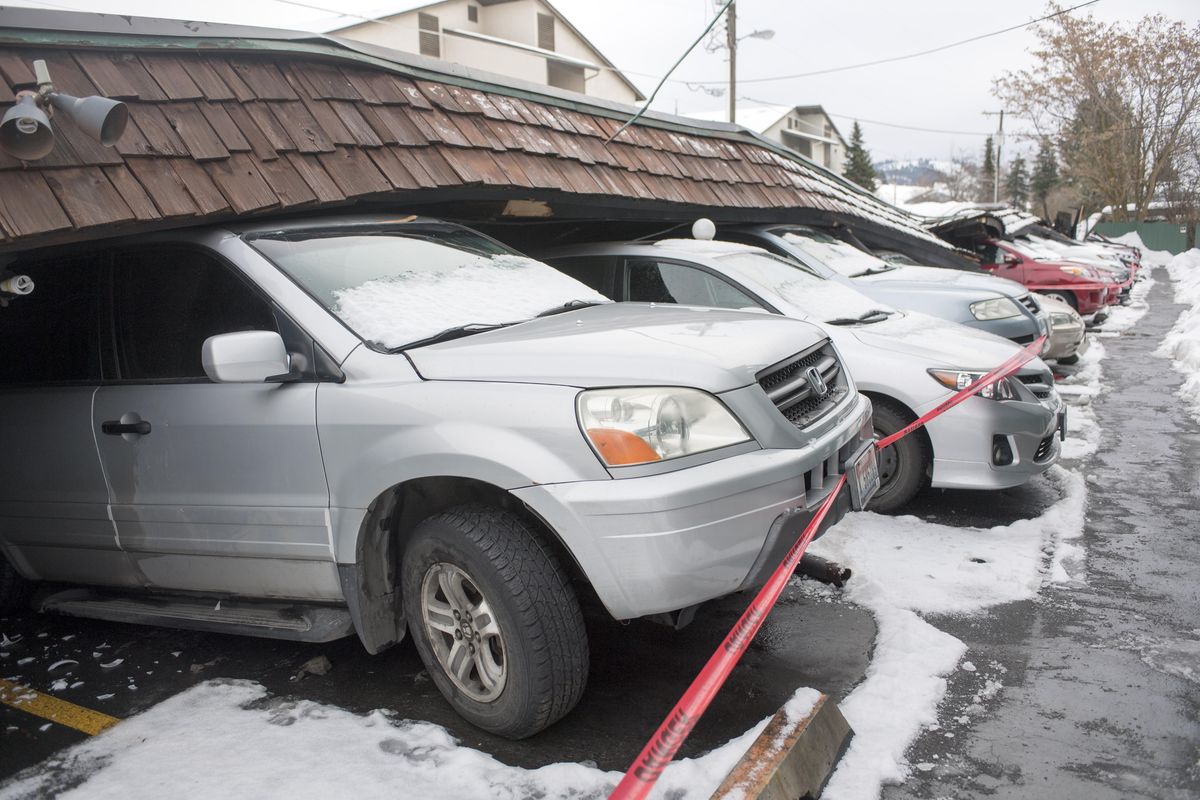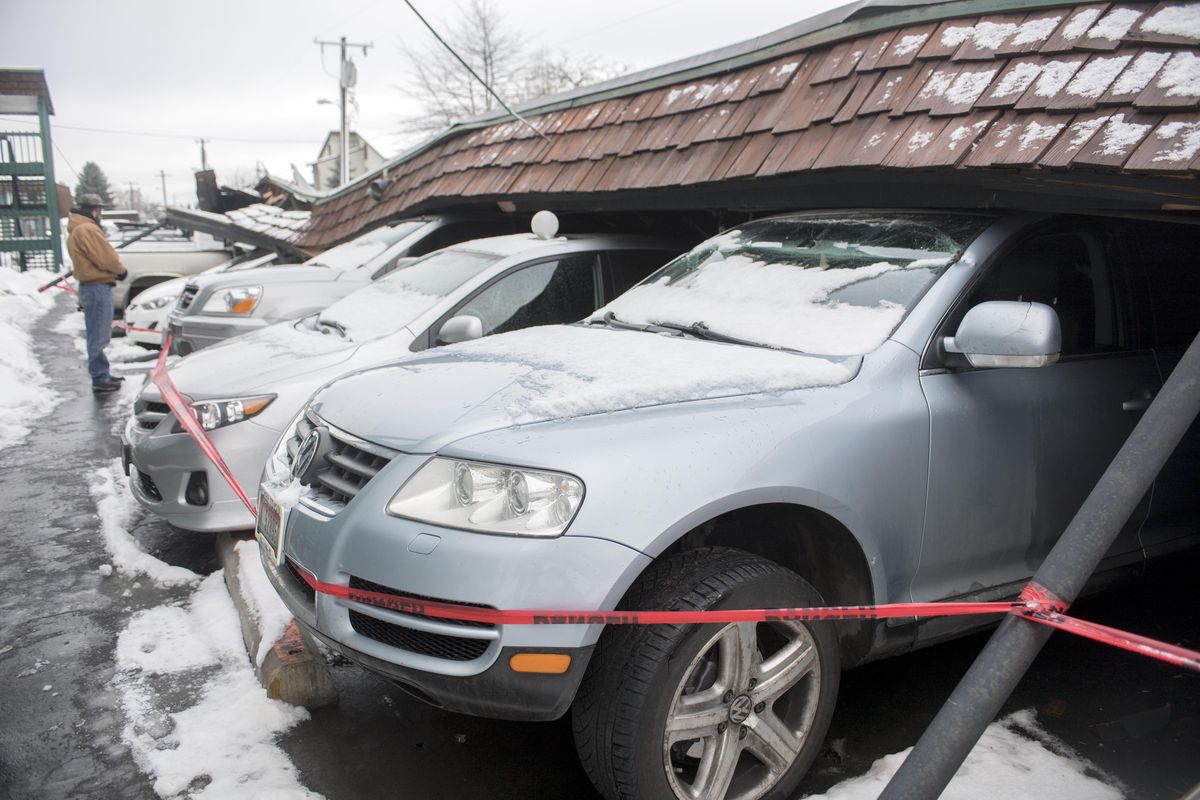Wet, heavy snow in Spokane sparks concern that weak roofs could collapse
More than a dozen cars were damaged or destroyed when a long carport collapsed Sunday at the Edgewater Village condominiums at 2121 East Upriver Drive in Spokane, shown here Monday, Feb. 6, 2017. (Jesse Tinsley / The Spokesman-Review)
Danielle Remington was in her kitchen Saturday night when she heard a loud noise coming from her condominium parking lot.
“Honestly, it sounded like a freight train derailed,” said Remington, who lives at Edgewater Village Condominiums on 2121 E. Upriver Drive.
What she heard was the sound of a carport crashing down on parked cars. The collapse, which happened at around 9 p.m. Saturday, was likely the cause of snow accumulation on the carport’s roof, said residents.
Snow-related roof collapse or structures falling is nothing new to the Spokane area, especially during harsher winters. In the 2008-09 winter season – one of Spokane’s snowiest on record – reports of snow-related structural collapse were common, said Brian Schaeffer, Spokane Fire Department’s assistant fire chief.
The National Weather Service on Monday said 95 roofs failed in 2008-09 when the snow load was heavier than it is now.
Forecasters estimate that Spokane roofs are currently shouldering 17 to 19 pounds per square foot.
The snow is heavier in Boundary County, closer to 28 to 29 pounds per square foot, said Jonathan Fox of the weather service.
Volunteers were being enlisted to help clear school roofs of snow there.
Spokane County’s building code requires that roofs be able to withstand a snow load minimum of 30 pounds per square foot, forecasters said.
A recommendation from the state’s structural engineers recommends that Spokane roofs be capable of holding at least 39 pounds per square foot.
Residential structures with triangular roof trusses do a good job of distributing the weight and are less prone to failure, forecasters said.
Following the weekend’s snowstorm, which dumped 7 to 12 inches of snow in the area, temperatures rose to above freezing and rain started to fall Sunday evening. These conditions created compacted snow and ice, which put extra weight and stress on roofs and structures.
A snow and rain storm expected on Wednesday night and Thursday could add to the load. Up to an inch of precipitation is possible, Fox said.
Schaeffer said the fire department had seen an uptick in calls related to roof collapse since the snowstorm started, but no injuries so far.
“With the way the snow is now, it certainly doesn’t surprise me,” he said. “And it will become more prevalent as the weather starts to get warmer, like we saw it in 2009.”
Schaeffer recommended homeowners take proactive steps to remove the snow, including using a roof rake or hiring a contractor.
“It’s a really good idea right now, especially with the temperatures changing and it melting so quickly,” he said. “It’s going to be an interesting next 48 hours for people.”
While no one was hurt at Edgewater, residents whose cars were parked under the carport eagerly waited for the weekend to end to assess the damage and work with their insurance.
Okyon Martin, a 69-year-old retiree living on Social Security, was up early Monday morning, smoking a cigarette and pacing her porch while she waited for an insurance agent to take a look at her 2006 Subaru trapped under piles of wood and metal.
In the meantime, she said she’s struggled with having no transportation, especially because she lives alone.
“I don’t know what to do,” she said.
Remington, who’s lived in her condo for three years and drives a trapped black BMW, said management has been helpful while working with affected residents. She said the complex’s maintenance worker has been great, too, and likely couldn’t keep up with clearing the hundreds-of-feet-long carport of all of the snow.
“I don’t think it was anybody’s fault that it happened,” she said. “We’ll be all right.”
Elsewhere, snow loads were 27 to 28 pounds per square foot in places like Kettle Falls, St. Maries and Kellogg.
Mike Prager contributed to this report.

